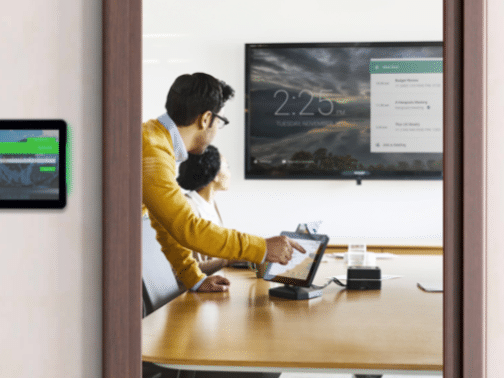Asset Tracking has come of age
How asset tracking will be used in 2022, and how modern wireless IoT tracking technologies compare.

By Kewal Gupta
17th December 2021
Asset tracking in 2022 will deliver so much more than simply knowing the location of resources and materials. Real-Time Location Systems (RTLS) already use a wide range of IoT devices and platforms to deliver intelligent asset insights across almost every vertical and market sector.
Businesses of every scale are recognising that asset tracking solutions can help them with their automation and business transformational goals, resulting in improved efficiency and productivity.
Asset tracking solutions are already providing invaluable insights into process efficiency when applied to resources, machinery, equipment, materials, and products.
Vehicle tracking is perhaps the most mature asset tracking use case that many will be familiar with. Telematics and vehicle tracking has also experienced a revolution in recent years with increased accuracy, greater resilience and larger data packets being broadcast. Businesses like Microgenie use GPRS enabled devices to allow full scale fleet tracking and telematics solutions. Sophisticated algorithms supporting OTA configuration of independent frequencies for geo-location and data upload, while in motion or static. Solutions are GPS enabled for outdoor precise geo-location, with the ability to fall back to GSM cell ID positioning when GPS is not available.
In general, IoT asset tracking platforms are being deployed at increasing scale across manufacturing, warehousing, transport, retail, hospitality, healthcare, military, and many other sectors to gain insights into asset status. Data from these platforms is being sent back into workflows to deliver improved processes and cost savings.
New systems are also helping to bring multiple asset tracking devices and their technologies under the control of a single platform, so business owners can more easily monitor a wide range of assets and resources. Platforms such as the IoT MicroGenie help businesses monitor and control almost every IoT tracking device from security systems and lighting to condition monitoring. It does this by acting as an IoT Hub, taking control of IoT devices and allowing users to gain actionable insight, management and control over their entire estate.
Now, Channel Partnerships in collaboration with Tech Data is helping organisations at every scale take full advantage of the latest innovations in asset tracking and IoT. The partnership brings together the leading platform and device manufacturers to help organisations solve their workflow challenges – from sophisticated telematics solutions to asset wayfinding and social distancing.
The benefits of asset tracking in 2022
These are among the first, and perhaps most valuable, effects of being able to monitor asset location and react in real-time. Asset tracking can make an instant impact on:
Inventory management
Business owners can know exactly how many pieces of inventory they have in stock, where they are and their condition in real-time.
Equipment maintenance
Organisations can arrange equipment maintenance schedules based on use (often measured in distance, time, and performance history) rather than via calendar dates.
Purchasing decisions
Accurate stock levels can be reported to help managers avoid over purchasing. Equally, a business can more accurately estimate stock purchasing requirements when inventory data is aligned to real-time stock levels, equipment availability and usage rates.
Compliance
Asset tracking platforms can automatically deliver historical data to help document compliance against applicable regulations.
Safety and security
Asset tracking deployments can be augmented with geofencing capabilities to limit or control access to sensitive or hazardous areas and materials.
Loss prevention
Geofencing settings applied to assets can alert managers when valuable assets move outside a predefined area. Additionally, workers can more easily locate an item of machinery or equipment within a large workspace or estate.
Customer experience
Accurate asset tracking can improve order picking, shipment processing and delivery timeframes – resulting in fewer customer issues, returns and cancellations.
Industry examples of asset tracking
Asset tracking platforms are increasingly being deployed to help organisations improve efficiency and productivity. Essentially, by tracking assets with greater accuracy and by leveraging greater insights into the condition of those assets, organisations can greatly improve performance.
The growth in asset tracking IoT devices and their related platforms and technologies is driving a revolution in organisational improvements, thanks to the ability to accurately track the flow of materials and people within an environment.
Here are some examples of how modern asset tracking and IoT platforms are changing the face of business today:
Supply chain management
Sensors with temperature-reading capability can document those goods in transit are always kept in optimum conditions. Additionally, asset tracking can support the chain of custody and avoid costly claims alongside accurate compliance reporting.
Manufacturing & Warehousing
The real-time reporting of assets within a process can identify potential bottlenecks and optimise the movement of goods and materials – as well as people and resources.
Accurate reporting of asset positions within a warehouse (including height) can help improve picking. Additionally, measurement of dwell times can streamline order processing and improve operational efficiency.
Healthcare
Asset tracking across a hospital estate makes medical equipment easier to locate, streamlining wait times and avoiding critical situations where essential equipment cannot be located.
Wireless asset tracking technologies compared
There are several location-tracking and communications technologies that can be applied to asset tracking sensors. Beacons and tags need to be compatible with your chosen platform’s digital standards, but in 2022 these are increasingly becoming agnostic – many platforms can accommodate devices that use almost any of the available technologies.
Each communication technology has its strengths and weaknesses, so potential buyers need to be aware of the various features and where each is best applied. Often it is best to gain the advice of your platform provider. A consultancy-led approach will provide you with more insights and recommendations – but the following outline might help when entering a discussion about the various options:
RFID for asset tracking
Radio-Frequency Identification, or RFID, uses radio waves to broadcast and detect an asset’s location. There are two main types of RFID – Active and Passive.
Passive RFID is not typically used for asset location purposes since devices using it are not equipped to broadcast their location.
Active RFID tags have their own power supply and can broadcast a signal. The assets’ location is calculated by measuring the signal strength as the tag moves around an environment.
Strengths of RFID in asset tracking
With RFID, no line-of-sight (LOS) is needed, and RFID signals are multidirectional. RFID delivers a signal that is robust, stable and resistant to interference. Additionally, RFID signals are easily picked up by readers and sensors.
RFID chips are usually compact and can be integrated with almost anything, making them ideal for discreet applications and portability.
Weaknesses of RFID in asset tracking
RFID signals are easily intercepted with an RFID reader, making them unsuitable for applications that demand data security and privacy compliance.
RFID is also an older platform with poor standardisation – making it more complex to integrate into existing platforms.
Ideal use cases for RFID in asset tracking
- Demanding environments and harsh conditions
- Discreet application and smaller items
- Standard asset tracking applications involving inventory, warehousing, shipping, etc.
- Simple access control solutions
Bluetooth Low Energy (BLE) for asset tracking
Bluetooth Low Energy (BLE) has quickly become one of the more popular communication technologies in asset tracking. BLE offers a wide range of features, and its growing popularity has ensured a vast ecosystem of devices and platforms that support it. BLE offers low energy use, interoperability, and stability.
Like RFID, BLE establishes the location of an asset by measuring signal strength – however, it can also geolocate based on the proximity of other BLE sensors within an array. Indeed, the accuracy of location data is improved by having more devices within a single environment.
The extremely low power consumption of BLE devices means that batteries in beacons and tags can last for five years or more, depending on the settings used. BLE also functions extremely well in both indoor and outdoor environments.
BLE has been adopted by the IoT asset tracking industry as a firm favourite, and as such it has been standardised to work with mobile devices including phones, tablets, and computers along with other consumer and industrial goods.
A major reason for its attractiveness as a platform for asset tracking is the enormous global penetration of BLE as a standard across a huge range of devices. Its ability to interact with phones, tablets and computers automatically creates an enormous network that BLE can leverage.
Strengths of BLE in asset tracking
Since BLE is already installed within millions of consumer devices, it can be used by anyone with a modern smartphone or tablet that has a suitable application installed. There is no need to buy additional hardware, which makes the cost of BLE significantly lower than RFID.
BLE can be adopted for use with sensors to report temperature, motion, vibration, impact, humidity, and more alongside its native location and positioning technology. It can be easily integrated with other technologies and cloud services – and easily deployed for simple use cases that can expand in the future as business needs to grow.
Weaknesses of BLE in asset tracking
Scaling BLE and preserving accuracy requires adding transmitters to create a denser network, which can be expensive in large deployments.
Ideal use cases for BLE
- Anything that demands tracking and location data such as wayfinding and navigation.
- Mapping workflows and asset movements through a business process
- Asset location in larger environments such as hospitals, schools, campuses, and airports.
- Temperature-sensitive asset tracking, such as cold-chain food processing
- Geo-fencing and security situations that require assets to remain inside or away from certain environments.
Ultra-Wide Band (UWB) for asset tracking
Ultra-Wide Band (UWB) offers extreme energy efficiency in IoT devices – beyond that of BLE. Its super efficiency is achieved by transmitting very short signal bursts on demand, instead of constantly or more regularly. With some signal bursts lasting a millionth of a second, power usage is minimal.
The wide spectrum of the UWB signal is strong and can carry very large amounts of data in short bursts. The signal can also more easily penetrate obstacles, such as walls and ceilings. The “low power spectral density” of a UWB signal will not interfere with other signals in the same frequency spectrum – so, devices can be tracked in very close proximity to each other.
Furthermore, the short burst nature of UWB transmissions makes it much easier to encrypt from both the transmitting asset and the receiving platform.
An interesting use case is the UWB enabled Social Distancing Tag from Alis Tech. This tag will alert employees if they come within close proximity of each other. The wrist tags can alert the user with vibration and flashing options, while adjustments to the distance measured can be updated easily.
Strengths of UWB in asset tracking
UWB offers highly accurate positioning because of its wide spectrum signal and the burst power of transmission. Despite the very low power consumption, the size of the data packets means that more accurate location and position data can be transmitted, down to 10cm.
Additionally, because the data packets can be much larger, adding encryption to your data is much easier. Data privacy, compliance and security are much easier to manage with UWB.
Finally, UWB offers reliable data transmission with almost zero interface – so the risk of packet loss, signal collision and corruption are minimised even within very crowded environments where multiple assets need to be tracked and monitored.
Weaknesses of UWB in asset tracking
Until recently there have been fewer UWB based IoT tracking platform options for buyers to choose from, and the costs of deployment were high. More recently UWB has seen a growth in popularity and support is gaining, however, it is still less adopted across tracking platforms than BLE.
Ideal use cases for UWB
- Environments that demand very low energy consumption
- Cases where data privacy, compliance and security are a priority
- Environments where multiple wireless platforms and other devices are already deployed
- Where ultra-precise location information is needed
- Cases that demand transmission of larger data packets
- Can be used for vehicle tracking and may be suitable for autonomous vehicles in the future (UWB-Based Tracking of Autonomous Vehicles with Multiple Receivers)
NBIoT for asset tracking
Unlike UWB, Narrow Band Internet of Things (NBIoT) operates across a very small part of the wireless spectrum – but broadcasts in multiple frequencies simultaneously. Like UWB however, it uses very little power because it does not broadcast its signal continuously or even very often.
NBIoT is designed to handle many small transmissions sent infrequently. The lack of a constant signal makes it a poor choice for real-time tracking updates on things that are in constant motion. However, NBIoT is aimed primarily at broadcasting status updates and infrequent two-way communications.
NBIoT is compatible with existing cellular networks and as such it offers unique scalability and accessibility for those users that demand huge coverage. Designed to be able to handle massive amounts of small individual connections, NBIoT is positioned to sweep up a new generation of connected devices and smart accessories in the coming years.
Strengths of NBIoT in asset tracking
NBIoT offers ultra-low power consumption. It is also capable of handling very large amounts of connections at once, making it ideal for IoT devices. Additionally, because NBIoT leverages existing cellular networks it will be much easier to grow a widely dispersed platform of connected devices.
Weaknesses of NBIoT in asset tracking
Like UWB, NBIoT is not ideal for any asset tracking that involves constantly moving or highly mobile devices (such as vehicle tracking). Additionally, NBIoT offers a very limited data packet size, so use cases can be limited.
Ideal use cases for NBIoT
- Updates from IoT-connected accessories and devices
- Tracking across very large areas, even country scale
- Periodically taking measurements from many locations, such as meter readings or occasional status reports
SUMMARY
Beacons, tags, and other sensors form the backbone of asset tracking platforms, and these devices are often empowered by different location-tracking technologies. Each platform approaches the challenge differently, but they are all focused on digitally tracking resources and materials in an environment. Many platform manufacturers are now providing hardware agnostic deployments, meaning sensors are compatible with multiple digital standards.
Several technologies are available for the purposes of asset tracking, each with its strengths and weaknesses. Those attributes make them suited for particular use cases in different industries. Since they function in different ways and achieve essentially the same result by taking different technical paths, the small differences between them can make them ideal for one context and a poor choice for another.
The range of choices and standards can be confusing, especially since there is so much crossover between them. However, organisations such as Channel Partnerships are here to help you navigate the sea of device and platform options. We can help you source the best solution for your future needs – without over specifying or adding unnecessary complexity.
Contact the team at Channel Partnerships today to get further insight into IoT and asset tracking solutions that can improve your organisational productivity.
Latest articles
February 26, 2025
Channel Tools partners with Zerotier to provide enterprises with Secure, Scalable Connectivity Solutions
Channel Tools partners with Zerotier to provide enterprises with secure, scalable connectivity…
February 23, 2025
Channel Tools Partners with Mimo to expand into Innovative Display and Tablet Solutions Market
Channel Tools Partners with Mimo to expand into Innovative Display and Tablet Solutions Market
December 18, 2024
Channel Tools Partners with Sclera to deliver Advanced AI-driven Asset Management
Aicuda World isn’t just a participant in the field of AI and security, it’s a thought leader,…
Join our Partnership Program
There are many benefits partnering with us. Simply complete the form at the bottom of this page to discuss how the program can sky-rocket your visibility in any technology market place. We have huge experience in the creation of new channels – and we can create introductions, leads and business opportunities for your sales teams.
Want to know how a Channel Partnership could benefit your business?
Complete the form below and one of our team will call you back:


